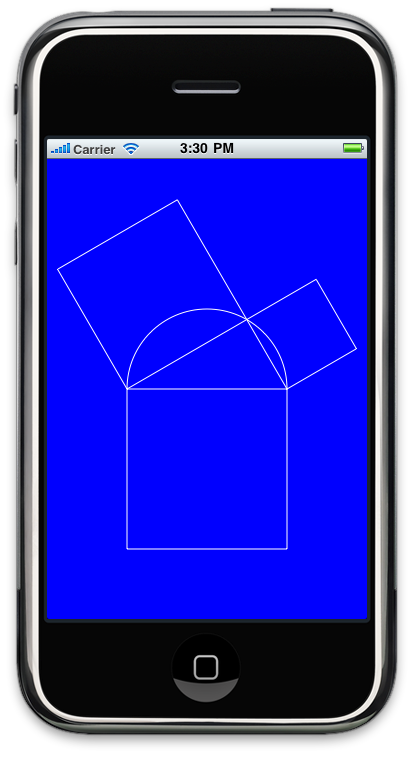
This app draws the same animation as the previous example, but it redraws only the parts of the picture that have changed.
Until now, a delegate has always had to adopt a protocol,
named in
<angle brackets>.
But the protocol adopted by our class
Delegate
is merely an
informal
protocol.
There are more things in heaven and earth, Horatio,
than are dreamt of in your philosophy.
See
Using
a Delegate to Provide Content.
Like the
drawRect:
method of class
UIView,
the
drawLayer:inContext:
should never be called explicitly.
We trigger a call to
drawRect:
by calling the
setNeedsDisplay
method of class
UIView;
we trigger a call to
drawLayer:inContext:
by calling the
setNeedsDisplay
method of class
CALayer.
drawRect:
is called before
drawLayer:inContext:.
The two transformations that
drawRect:
applied to
c
(CGContextTranslateCTM
and
CGContextScaleCTM
are still in force when the
c
is passed to
drawLayer:inContext:.
It’s the same
c.
I turned the
θ instance variable of class
View
into a property for the convenience of class
Delegate.
main.mPythagorasAppDelegateViewDelegate
Create the new class
Delegate.
File → New File… →
Objective-C class
Subclass of: NSObject
Project →
Edit Active Target "Pythagoras" →
General →
Linked Libraries
Press the plus sign and add
QuartzCore.framework.